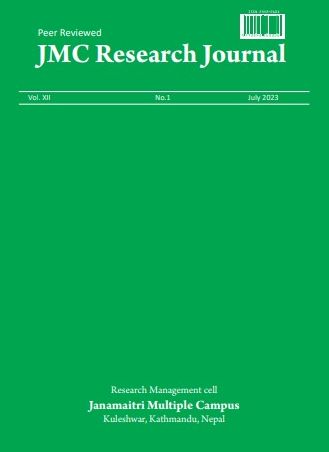Reciprocal Learning Mathematics through Honeycomb Patterns
DOI:
https://doi.org/10.3126/jmcrj.v12i1.61631Keywords:
School Mathematics, Learning, Honeycomb PatternsAbstract
The purpose of this paper is to examine the mathematical ideas, problems, and solutions from the honeycomb patterns. This is a qualitative research design under an interpretive paradigm. I used interview, participant observation, small group discussions, photos, notes taken, and personal reflection for the data collection tools. The information was analyzed by participants generated text, activities, and experience of learning mathematics through the honeycomb patterns. The major themes that generated were algebra and students knowing of in-depth processes and solutions; algebraic and geometrical interpretation of 2D shapes with formulas; and geometrical knowledge of honeycomb patterns. The study showed that honeycomb patterns are the source for reciprocal learning of multidimensional area contents like algebra (quadratic and arithmetic sequence, hexagonal congruent tessellation, and geometry parallel lines, angles, and similar and congruent shapes together). What the students and the teachers need in reciprocal learning is the skill of observing patterns, redrawing, imagining, estimating, and logically intervening and shearing in them. The findings of the study can be helpful to teachers, students, and educators for reciprocal ways of learning, teaching, and training mathematics, connecting such patterns interestingly and meaningfully.

